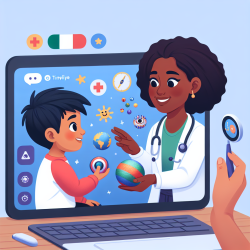As speech-language pathologists (SLPs), our mission is to create the best possible outcomes for children. One way to achieve this is by staying abreast of the latest research and implementing evidence-based practices. Recently, the 11th Annual Meeting of the Israel Society for Neuroscience presented groundbreaking research that offers new insights into child development and therapy outcomes. In this blog, we'll explore key findings from this research and discuss how SLPs can apply these insights to improve their practice.
Understanding Neural Plasticity
Neural plasticity, the brain's ability to reorganize itself by forming new neural connections, is a fundamental concept in neuroscience. The research presented at the meeting highlights how neural plasticity plays a crucial role in language acquisition and cognitive development in children. This understanding can be pivotal for SLPs working with children who have speech and language disorders.
Key Findings and Their Implications
The research article, Abstracts of the 11th Annual Meeting of the Israel Society for Neuroscience, provides several important insights:
- Early Intervention is Crucial: The studies underscore the importance of early intervention in leveraging neural plasticity. Early therapeutic interventions can lead to more significant improvements in language skills, as younger brains are more adaptable.
- Customized Therapy Plans: The research emphasizes the need for individualized therapy plans that cater to the unique neural profiles of each child. By tailoring interventions to the specific needs of the child, SLPs can maximize therapy outcomes.
- Continuous Monitoring and Adjustment: The findings suggest that continuous monitoring and adjustment of therapy plans based on real-time data can lead to better outcomes. Data-driven decisions allow SLPs to refine their approaches and ensure that interventions remain effective.
Practical Applications for SLPs
So, how can SLPs integrate these research findings into their practice? Here are some actionable steps:
- Emphasize Early Screening: Implement routine early screening processes to identify children who may benefit from early intervention. This proactive approach can help catch potential issues before they become more severe.
- Utilize Technology: Incorporate technology, such as online therapy platforms like TinyEYE, to deliver customized therapy plans. Technology can also facilitate continuous monitoring and data collection, enabling more informed decision-making.
- Collaborate with Neuroscientists: Engage in interdisciplinary collaboration with neuroscientists to stay updated on the latest research and incorporate cutting-edge insights into your practice.
- Professional Development: Participate in professional development opportunities that focus on neural plasticity and its implications for speech and language therapy. This can enhance your knowledge and skills, allowing you to provide the best possible care for your clients.
Encouraging Further Research
While the research presented at the 11th Annual Meeting of the Israel Society for Neuroscience provides valuable insights, it also highlights the need for ongoing research. As practitioners, we should advocate for and contribute to research efforts that aim to deepen our understanding of neural plasticity and its impact on speech and language development.
To read the original research paper, please follow this link: Abstracts of the 11th Annual Meeting of the Israel Society for Neuroscience.










